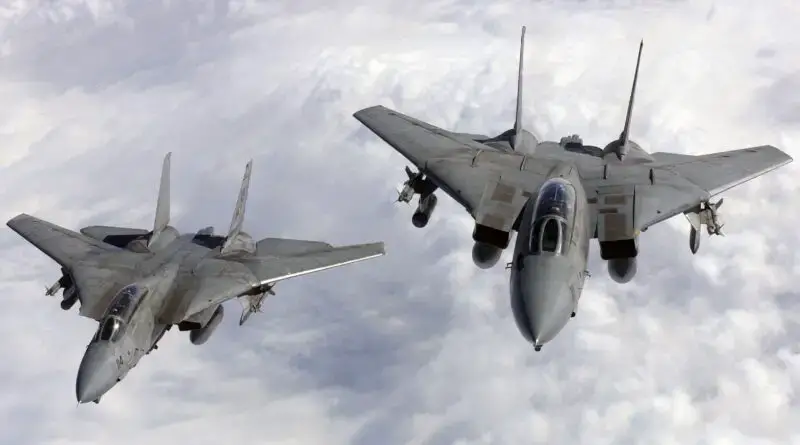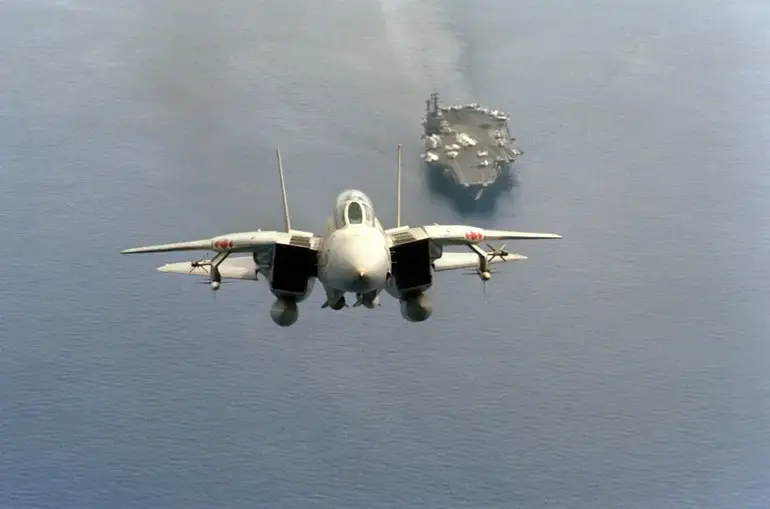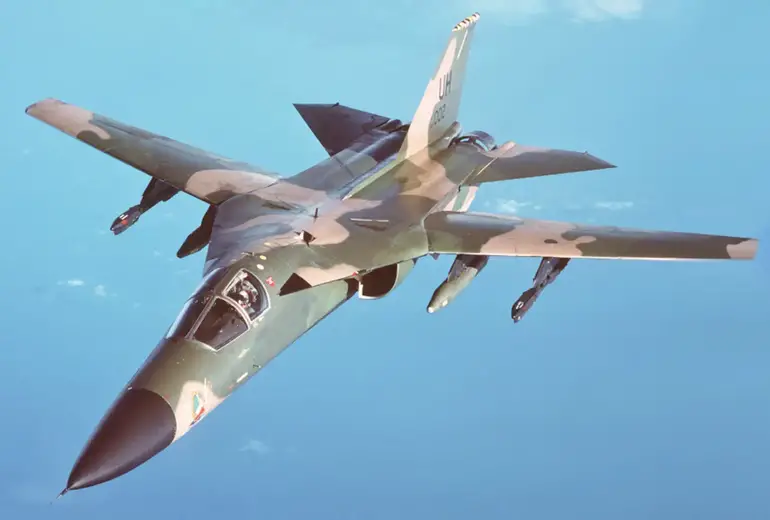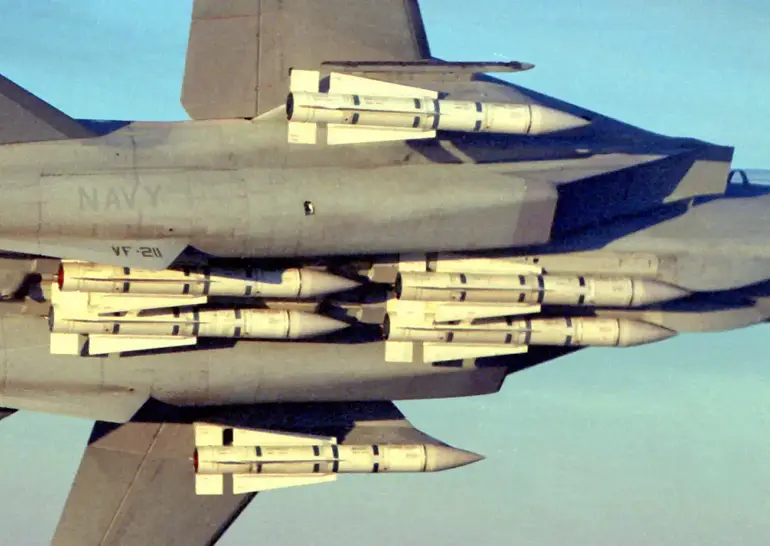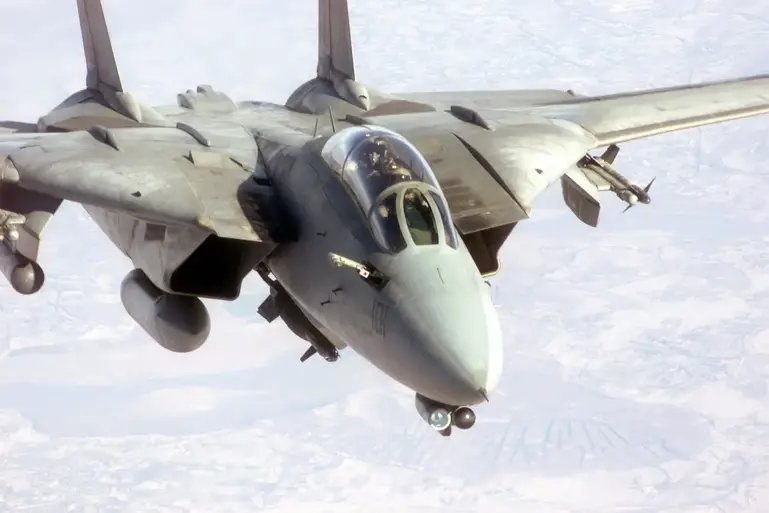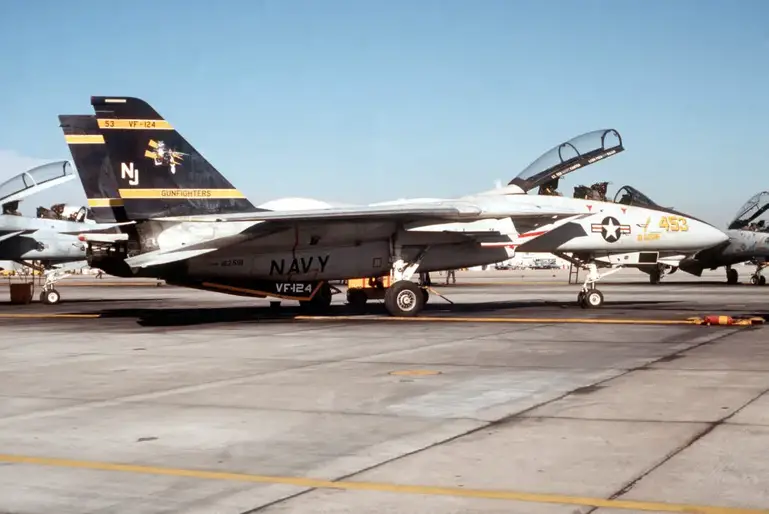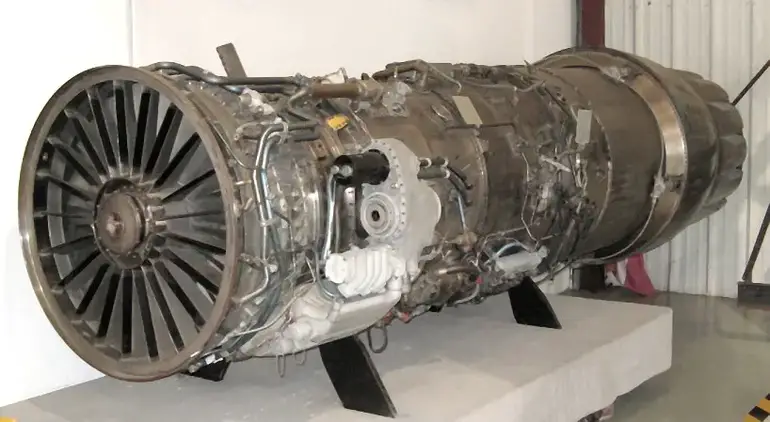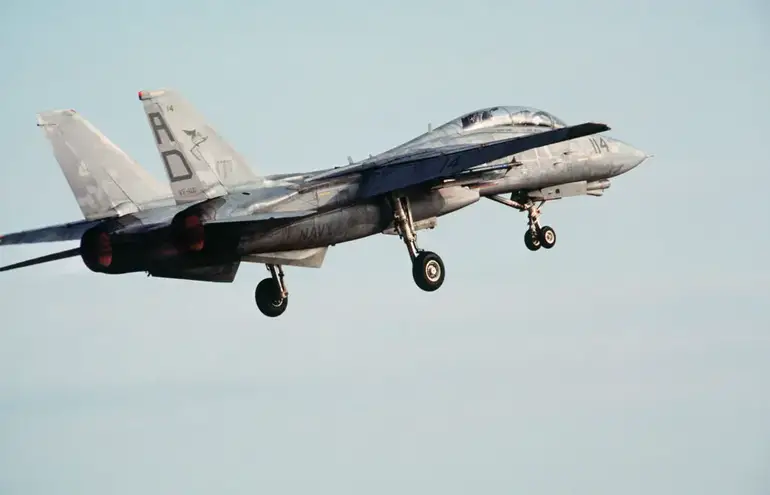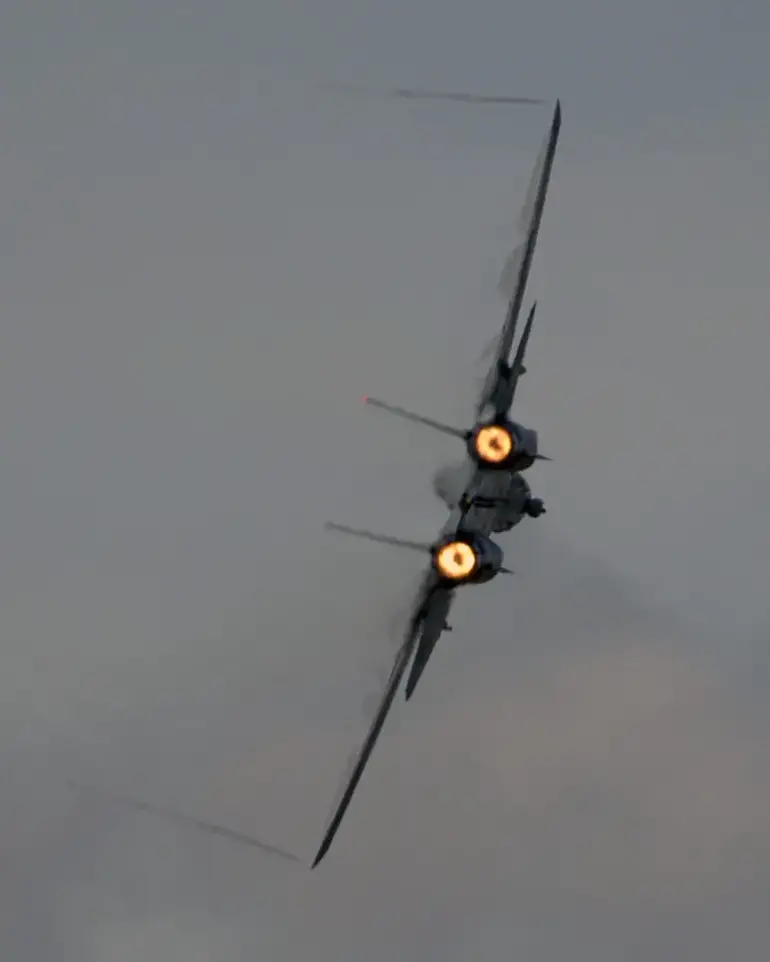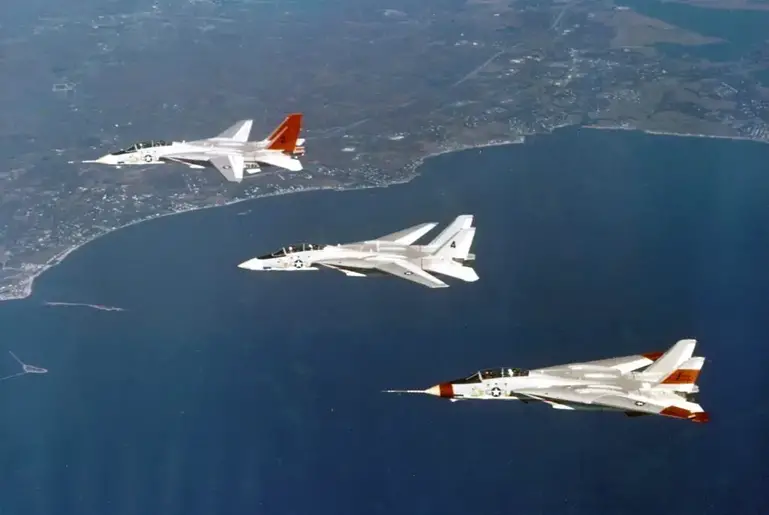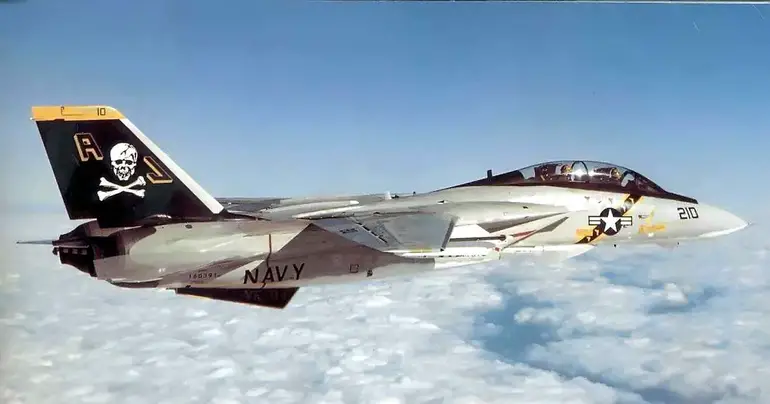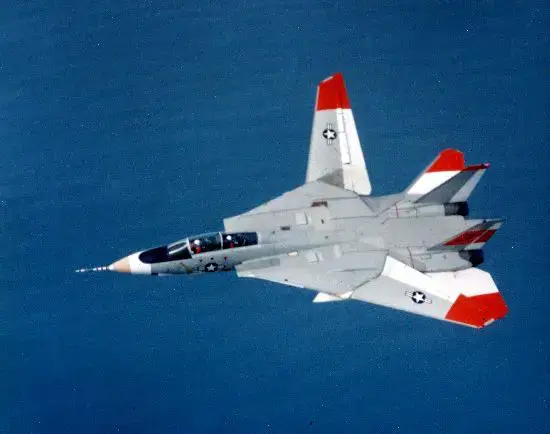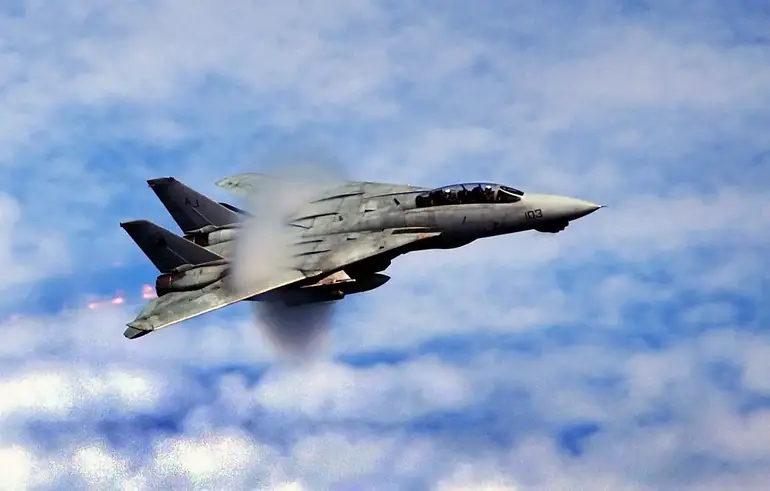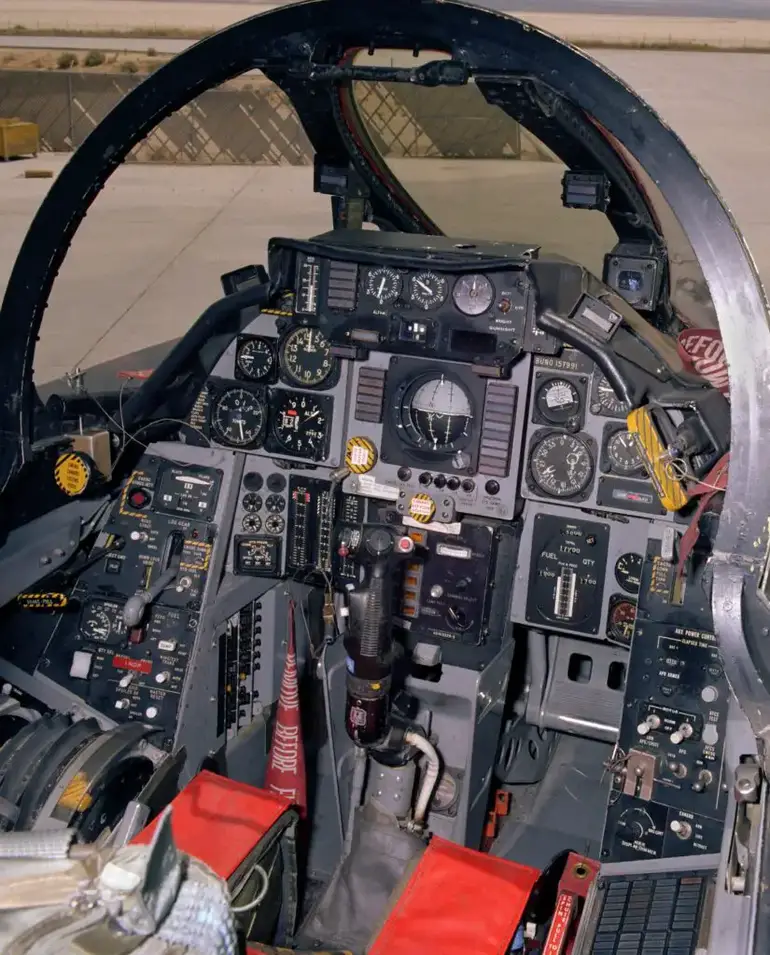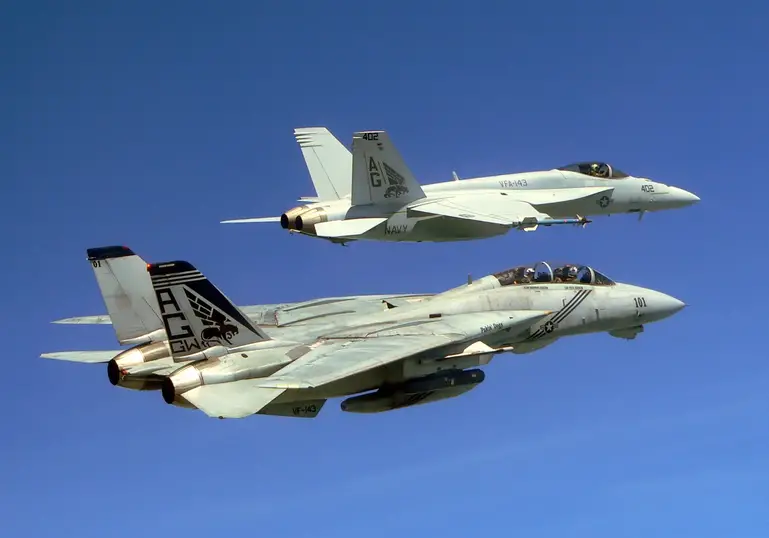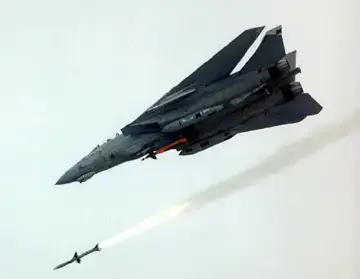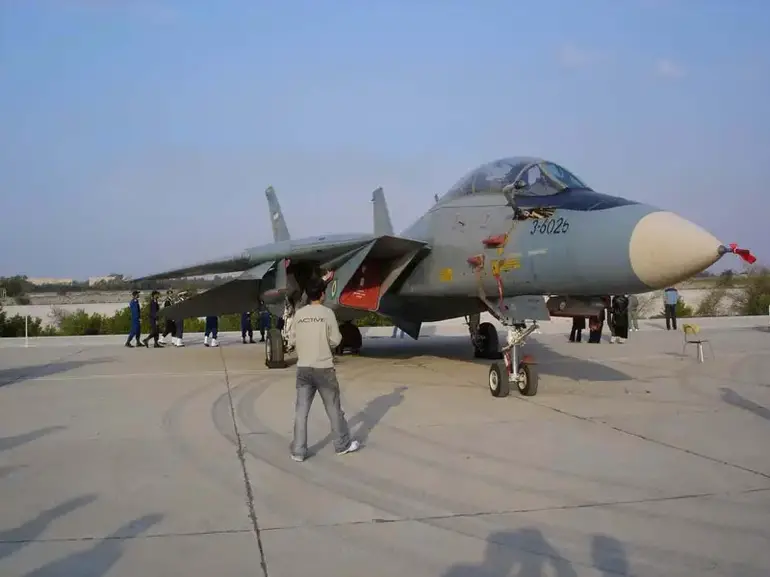Grumman F-14 Tomcat – The Big Cat with 2 Terrible Engines
In the 1980s, the F-14 Tomcat became one of the most iconic and best-known aircraft of the US Navy, not least because of its starring role in the blockbuster 1986 movie Top Gun. But the F-14 story really begins back in 1965, with the first flight of the prototype of a radical new US Navy aircraft.
It was an interceptor, it used variable geometry wings, it was big, it was heavy, it was complex, it killed several experienced test pilots during flight testing and it quickly gained the derogatory nickname the “Sea Pig.” The new swing-wing aircraft was generally assessed to be a disaster. But it wasn’t the F-14…
In 1961, newly appointed Secretary of Defense Robert McNamara was concerned by the escalating costs of the US Army, Navy, and Air Force. Both the US Navy and the USAF were pushing for a new aircraft to be developed to replace the F-4 Phantom.
McNamara had what seemed like a great idea at the time: a single design would be created that would suit both services, potentially saving millions of dollars in research and development.
The Tactical Fighter–Experimental (TFX) design competition was launched in late 1961 to find a suitable aircraft. Both the Navy and USAF favoured a proposal submitted by Boeing. McNamara chose the cheaper submission from General Dynamics. Worst of all from the perspective of the US Navy, McNamara put the USAF in charge of developing the new aircraft.
The design developed by General Dynamics (in partnership with Grumman) was for an aircraft with variable-geometry wings capable of both achieving over Mach 2 while having long range and endurance. Critically, the new aircraft would also be capable of carrying the new AIM-54 Phoenix long-range air-to-air missile.
The USAF version of the new aircraft (mainly intended for low-level bombing) was given the designation F-111A while the navy interceptor version became the F111B.
Flight testing simply confirmed what many naval aviators believed: the heavy, complex, underpowered F-111B would never be an effective interceptor capable of operating from aircraft carriers.
After the deaths of several pilots during testing, there were serious doubts about whether the F-111B was even airworthy! Development limped on but at a Senate Hearing in the late 1960s, Vice Admiral Tom Connolly was asked if the F-111 could be an effective navy aircraft if it were given more powerful engines? His answer became famous and effectively killed the F-111B program:
“Mr. Chairman, there isn’t enough thrust in all Christendom to make a Navy fighter out of that airplane.”
In 1968, McNamara resigned as Secretary of Defense and the F-111B program was terminated. But by that time, Grumman had submitted an unsolicited proposal to the US Navy for a new interceptor that could carry the AIM-54 missile, but that was also an agile air superiority fighter…
The proposal submitted by Grumman was for a two-seat, variable geometry aircraft that would be capable of meeting US Navy requirements for high performance and long range.
However, there were concerns that Grumman lacked the expertise to create an effective new combat aircraft and the initial contract signed by the US Navy contained some brutal penalty clauses.
Grumman would be fined, amongst other things, $440,000 for every 100lbs that the new aircraft was overweight, $1.056 million for each knot over the requested approach speed and $5,000 for every day it was late in delivering the first prototype.
Somehow, Grumman delivered the prototype on time and on cost and it exceeded every aspect of the specification demanded by the US Navy! Prototype #1 of what had then been designated the F-14 made its first flight from the Grumman facility in Calverton, NY on December 21st, 1970.
The new aircraft used a weight-saving titanium box as the main spar and included an early microprocessor to automatically sweep the wings to the optimum angle for the aircraft’s current speed. The sophisticated AN/AWG-9 radar system allowed the back-seat Radar Intercept Officer (RIO) to track up to 24 separate targets at once and attack up to 6 simultaneously with AIM-54 missiles at a range of up to 100 miles.
The aircraft was also armed with an integral M-61 Vulcan cannon for close-in dogfighting.
VF-124, the Fleet Replacement Squadron, received its first F-14As in October 1972 just 51 months after the initial contract was signed, providing a stark contrast to the protracted design and development of the aborted F-111B.
The new aircraft was given the official name Tomcat, allegedly because in the early stages of development it was known informally in the US Navy as “Tom’s Cat,” a reference to Vice Admiral Tom Connolly who had helped to kill the F-111B program and championed the new Grumman proposal.
F-14 Variants
The new F-14A proved to be an effective interceptor, but it did have a major flaw: its twin Pratt & Whitney TF30 afterburning turbofan engines.
As a cost-saving measure, the Navy was forced to use this engine, originally designed and developed for use in the F-111B, in the F-14A.
It provided a respectable dash top speed of over Mach 2 and good endurance at lower speeds, but it was ill-suited to the rapid changes of thrust needed in an agile dogfighter, something that was never envisaged for the F-111B.
If the pilot in the F-14A changed the throttle settings aggressively, especially at high angles of attack (AOA), this could cause a compressor stall in the engine. Because the engines were widely spaced, a stall in one engine would cause the aircraft to yaw violently.
At low speeds, this could cause the aircraft to enter a spin, a flat spin or even an inverted flat spin, from which recovery was especially difficult. This was a particular problem during the approach for a carrier landing.
If an aircraft is “waved-off” during final approach, or if it misses the wires on the carrier deck, it is necessary to promptly advance the throttles to provide enough power to continue for another landing attempt.
An aircraft on final approach will always have a high AOA and with the TF30 engine, rapidly advancing the throttles in this situation carried the risk of causing a compressor stall and perhaps a spin at low altitude, something that is obviously very dangerous.
When you add in engine fires and engine failures caused by interrupted air flow during manoeuvres, it can be argued with some justification that the TF30 was inherently unsuitable for carrier operations and perhaps even for use in an air superiority fighter.
It is certainly true that flying the F-14A required very, very careful handling of the throttles. In an interview given to the Washington Post in 1984, Capt. Lee Tillotson, the US Navy’s F14 program coordinator, in response to a question about the TF30 engines admitted:
“From the very start you essentially teach the pilots to fly the engine as a priority over flying the airplane. The pilot has to be very aware of what he does with the throttle at all times.”
Less politely, some US Navy personnel began to refer to the F-14A as “a nice aircraft powered by two pieces of junk.” It has been estimated that up to 40 F-14As were lost due to accidents caused by compressor stalls in the TF30 engines. Navy Secretary John F. Lehman Jr. would later say that:
“The TF30 engine is just a terrible engine and has accounted for 28.2 percent of all F14 crashes.”
Over 500 F-14As were delivered to the US Navy, but clearly, something had to be done to improve the engines in what otherwise had the potential to become an effective combat aircraft.
The first attempt to improve the F-14A happened as early as September 1973 with the first flight of what was designated by Grumman as the F-14B. This was provided with a pair of Pratt & Whitney F401-P40 engines, but during flight testing these engines also proved troublesome and the prototype was soon placed in long-term storage.
However, continuing problems with the TF30 saw it brought back out in early 1981 and fitted with another set of engines, this time the General Electric F101DFE (Derivative Fighter Engine), a development of the engine fitted in the B1 Lancer bomber.
After extensive flight testing, the new engine was found to be more effective in all phases of flight than the TF30. However, for reasons that are not entirely clear, the US Navy cancelled the F-14B program and the sole prototype was once again placed in storage.
It wasn’t until July 1984 that it was pulled back out and fitted with a third engine type, the General Electric F110-GE-400. This time, testing revealed very significant improvements that included a 60% increase in range and the ability to take off from a carrier without the need to use afterburner.
The F110 also proved to be reliable, not prone to compressor stall and with this engine the F-14 could finally be flown without throttle restrictions.
The new aircraft was initially designated the F-14A (PLUS) and production began in March 1987. In May 1991, it was formally redesignated F-14B.
In addition to new engines, the F-14B was also fitted with the then-new ALR-67 Radar Homing and Warning (RHAW) system that provided automatic warning of enemy radar activity.
A total of 38 new F-14Bs were manufactured and 43 existing F-14As were upgraded to B specification. But, as late as 1996, 60% of F-14s operated by the Navy still used the troublesome TF30 engines.
During the F-14B program, studies were carried out on the creation of the F-14C which would have included upgraded avionics and improved radar and fire control. However, this was abandoned and instead, work continued on the creation of the last, and best, F-14 variant, the D model.
The F-14D Super Tomcat used the same GE F110 engines as the B model, but included an upgraded avionic suite, an all-new “glass” cockpit, new radar and Infrared search and track (IRST) capability.
Read More: Curtiss XP-55 Ascender – The Flawed Fighter
This model could also be equipped with a Low Altitude Navigation and Targeting Infrared for Night (LANTIRN) navigation and targeting system allowing it to deliver smart and iron bombs at night and in adverse weather. When used in the strike role, the F-14 was informally known as the “Bombcat.”
The first F-14Ds were delivered in 1991, but a total of only 37 new aircraft were produced (and 18 F-14As were upgraded to D specification) before the US Navy cancelled all-new production and conversion.
Instead, it was announced that the F-14 (and the A-6E) were to be replaced in US Navy service by the new McDonnell Douglas F/A-18 multi-role aircraft.
The F-14 entered service with the US Navy in 1974 and remained in front-line service until 2006. This aircraft was never used in the primary role for which it was designed, the interception of Soviet bombers and guided missiles, but it did see action in a number of campaigns in the Middle East and the Balkans.
The first F-14 kills in air-to-air combat happened in 1981 when two Libyan Su-22 Fitter aircraft fired on a pair of F-14s from VF-41 on a Combat Air Patrol (CAP) from the carrier USS Nimitz off the Libyan coast. Both Su-22s were shot down and both F-14s were undamaged.
In a similar incident in the same area in 1989, two Libyan MiG-23 Floggers were shot down by F-14s of VF-32.
US Navy F-14s also took part in strike and interception missions during Operation Desert Storm (1990-1991), Operation Deliberate Force (1995), Operation Allied Force (1999) and in the initial stages of Operation Iraqi Freedom (2003 – 2011).
Only one further air-to-air kill was recorded in 1991 when an F-14 of VF-1 shot down an Iraqi Mi-8 Hip helicopter during Operation Desert Storm.
However, the US Navy wasn’t the only operator of the F-14. In 1974, the Imperial Iranian Air Force placed an order for 80 F-14As Tomcats and over 600 AIM-54 missiles.
Worth over $2 billion, this was the largest US arms sale to date and it helped to save Grumman which was on the verge of bankruptcy. Following the revolution in 1979, the Republic of Iran Air Force inherited these aircraft and missiles and used them during a series of wars with Iraq from 1980 – 1988.
Iranian F-14s scored air-to-air kills against Iraqi MiG-23 Floggers and Mirage F.1s, though many F-14s were lost both in combat and as a result of compressor stalls in their TF30 engines.
The main issue for the Iranian F-14s after the revolution was a lack of spares. America refused to trade with the Republic of Iran and the Iranian F-14 fleet was gradually whittled down due to maintenance issues. When the last F-14s were retired by the US Navy, all were shredded to prevent any components from reaching Iran.
The F-14 was a superb interceptor and dogfighter, but for much of its service life it was seriously hampered by “pieces of junk” engines. The TF30 engines that powered the F-14A had issues that led to the loss of a number of aircraft and seriously limited exploiting the potential capability of the airframe.
The F-14B and D were much better, but for most of the time it was used by the US Navy, the bulk of the F-14 fleet was still powered by the troublesome TF30 (it is believed that TF30-powered F-14s were still being used by the US Navy as late as 2004).
Overall, the F-14 was a superb aircraft. The B and D models particularly were, arguably, amongst the best air superiority fighters ever created. But the F-14 was dogged by cost issues.
The use of the TF30 engine in the original F-14A was a cost-saving measure. Improved F-14B and F-14Ds were produced only in limited numbers, again due to cost pressures.
The decision to replace the F-14 with the F/A-18 was partly taken due to the fact that the new aircraft was cheaper and because it lacked the complex wing-sweep mechanism, simpler and cheaper to maintain. Nevertheless, the F-14 Tomcat remains one of the best-loved and most instantly recognizable combat aircraft of the late 20th century.
Hits: 8
